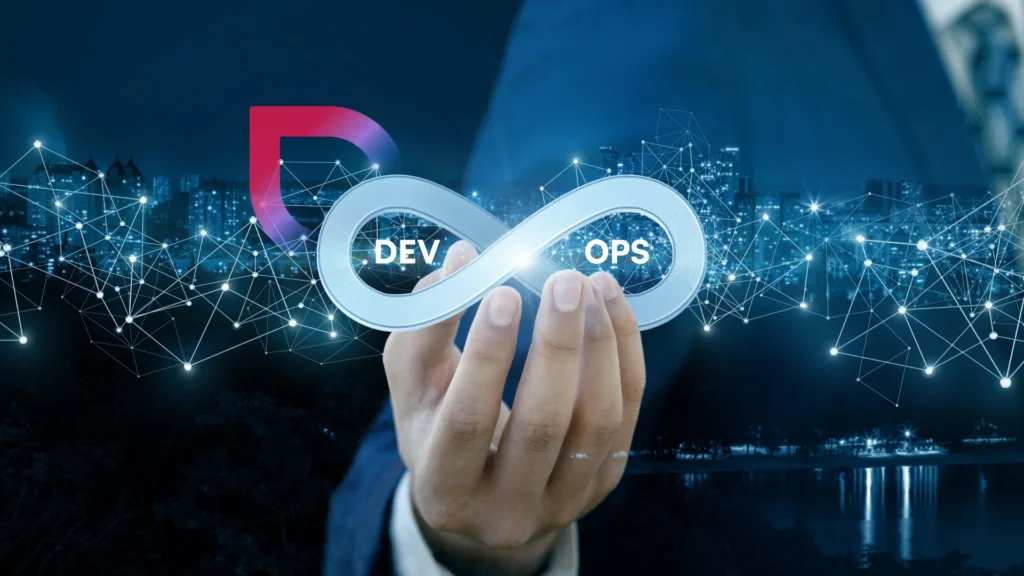The world of software development is evolving rapidly, and at the center of this transformation is DevOps. In 2025, DevOps is no longer just a methodology—it’s a critical component for driving innovation, scalability, and security. At Encoderse, our mission is to keep you informed about the ongoing developments in the tech domain, helping you stay ahead of the curve. In this blog, we explore the top DevOps Trends in 2025: GitOps, Platform Engineering & More, and how these innovations are reshaping software delivery and operations.
Why DevOps Continues to Grow

DevOps has been around for over a decade, but its growth trajectory shows no signs of slowing down. In fact, with the rise of cloud-native technologies, AI-driven automation, and continuous delivery pipelines, DevOps practices have become even more crucial. By 2025, companies that adopt modern DevOps trends will enjoy faster release cycles, improved product quality, and stronger alignment between development and operations teams.
1. GitOps Becomes the Gold Standard
GitOps has gained massive traction in recent years and is poised to become the default operational model by 2025. The GitOps methodology relies on Git repositories as the source of truth for declarative infrastructure and application configurations. This means that any change to infrastructure or application state is tracked, versioned, and auditable.
Why GitOps Matters in 2025:
- Improved Security: All changes are traceable, reducing the chances of unauthorized access or misconfiguration.
- Faster Rollbacks: If something breaks, rolling back to a previous version is as simple as reverting a Git commit.
- Scalability: Automating deployments through Git enables teams to scale infrastructure and applications seamlessly.
Organizations like Microsoft, Red Hat, and Amazon are already investing heavily in GitOps, and startups are building entire platforms around it. If you haven’t adopted GitOps yet, now is the time.
2. Platform Engineering Takes Center Stage
Platform engineering is another hot trend emerging as a solution to manage complex infrastructure at scale. In 2025, organizations are expected to invest more in building internal developer platforms (IDPs) that abstract away complexity and standardize workflows.
Key Benefits of Platform Engineering:
- Improved Developer Experience: Developers can deploy applications without worrying about underlying infrastructure.
- Standardization: A well-built platform enforces best practices across teams.
- Efficiency: Reduces redundant work and accelerates the delivery pipeline.
Platform engineers act as bridge-builders, enabling DevOps, SREs, and developers to collaborate more effectively. Tools like Backstage, Crossplane, and Humanitec are leading this movement and will continue to shape how platforms are built and maintained in 2025.
3. AI and ML-Driven DevOps
The integration of artificial intelligence and machine learning into DevOps processes is revolutionizing operations. In 2025, expect to see more tools that use AI to predict incidents, recommend code changes, and even auto-resolve issues before they affect end users.
AI in DevOps Enables:
- Anomaly Detection: AI can identify unusual patterns in logs and metrics in real time.
- Automated Testing: Intelligent testing systems can analyze code changes and prioritize test coverage accordingly.
- Optimized Resource Allocation: Machine learning models can predict usage patterns and allocate infrastructure resources dynamically.
By embracing AI-driven DevOps, companies can reduce manual overhead, improve system reliability, and boost overall performance.
4. DevSecOps: Security as Code
As cyber threats grow more sophisticated, integrating security into DevOps pipelines is more important than ever. DevSecOps—the practice of embedding security throughout the development lifecycle—will be a dominant trend in 2025.
Top DevSecOps Practices:
- Shift Left Security: Run security scans early in the development process.
- Automated Vulnerability Scanning: Use tools like Snyk, Aqua, and Trivy to automate security checks.
- Compliance as Code: Ensure all deployments meet regulatory requirements using automated policies.
Encoderse encourages teams to make security a shared responsibility across all development and operations roles.
5. Serverless DevOps
Serverless architecture continues to gain popularity thanks to its scalability and cost efficiency. In 2025, expect more teams to adopt serverless DevOps strategies to minimize operational overhead and focus on innovation.
Why Serverless Matters:
- No Infrastructure Management: Developers can deploy functions without provisioning servers.
- Scalability: Serverless functions scale automatically based on usage.
- Cost Efficiency: You pay only for what you use.
Popular platforms like AWS Lambda, Azure Functions, and Google Cloud Functions will continue to evolve, making serverless development even more accessible.
6. Unified Observability
Observability tools have come a long way, but in 2025, we’ll see a strong push toward unified observability platforms. These platforms consolidate logs, metrics, traces, and events into a single pane of glass.
Unified Observability Benefits:
- Faster Incident Response: Correlate data sources to identify issues quickly.
- Better Collaboration: Developers and ops teams can work off a shared platform.
- Proactive Monitoring: Predict and prevent incidents using real-time insights.
Expect more integration between observability tools and platforms like Grafana, Datadog, New Relic, and Elastic.
7. Everything as Code (EaC)
Infrastructure as Code (IaC) is already a staple, but in 2025, the concept is expanding to Everything as Code. This includes policy as code, compliance as code, and even documentation as code.
EaC Advantages:
- Version Control: Everything is trackable via Git.
- Automation: Automate every part of the lifecycle.
- Consistency: Avoid configuration drift across environments.
By treating all aspects of infrastructure and operations as code, teams gain better control, faster rollouts, and higher confidence in their systems.
8. Remote-First DevOps
Remote work is no longer an exception—it’s the norm. DevOps teams in 2025 will need tools and workflows built for distributed collaboration.
Key Features of Remote DevOps:
- Cloud-Based CI/CD Tools: Jenkins X, GitHub Actions, and CircleCI make it easy to run pipelines from anywhere.
- ChatOps: Integrating DevOps workflows into communication platforms like Slack and Microsoft Teams.
- Virtual War Rooms: Real-time incident response via collaborative dashboards and video calls.
At Encoderse, we see remote-first DevOps as a huge enabler for global tech teams and startups alike.
Preparing for the Future of DevOps
The DevOps landscape in 2025 is dynamic, fast-paced, and filled with opportunities. Whether you’re a developer, sysadmin, SRE, or team lead, understanding these trends will help you stay relevant and innovative. Embrace practices like GitOps and platform engineering, invest in observability, and never stop learning.
At Encoderse, we’re committed to helping you navigate the changing tech world with practical insights and resources. Stay tuned for more updates as we continue to explore what’s next in the ever-evolving DevOps space.
Stay agile. Stay informed. Stay ahead—with Encoderse.


